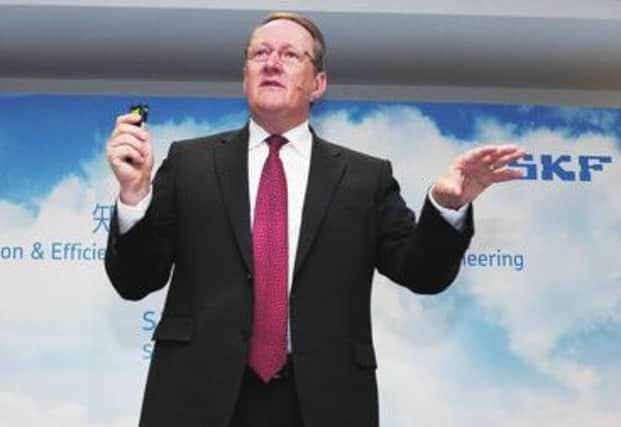Year brings mixed fortunes for engineering


As the outgoing chief executive of SKF – the Swedish industrial heavyweight with operations in 28 countries around the world – Johnstone has a keen grasp of the big picture. Known as a bellwether for global industry, SKF’s products are used in nearly every manufacturing sector across Europe, the Americas and Asia.
Looking at the geographical scope of the group’s business, Johnstone sees a “mixed picture” around the world just now. Recently back in his home country on a combined trip for business and pleasure, the Scots-born chief executive amicably avoided being pinned down on exactly how the forthcoming year will shape up.
Advertisement
Hide AdAdvertisement
Hide Ad“There are so many mixed signals at the moment,” said Johnstone, who is retiring after 12 years as chief executive of SKF. “It is very hard to forecast.”
The latest survey from Scottish Engineering showed a sector getting back on track in the final quarter of 2014, with an increase in employment and domestic demand. However, the “inherent fragility” of this recovery was underlined by feeble export activity, hampered in large part by weakness in Europe and conflict in Russia.
Johnstone believes that the situation between Russia and the Ukraine has “clearly” impacted confidence, with ramifications beyond the sanctions that have halted certain exports into the country. The country’s economy is slowing, a feature that has already eroded other markets on Scotland’s doorstep.
“We don’t see a strong Europe any time in the near future,” he said. “Europe remains relatively anaemic.”
It’s better news for firms exporting to the United States, where the economy is “moving along the right direction”.
Industry is also being repatriated from foreign shores, a growing trend that has led SKF to invest some $2.5 billion (£1.6bn) in its US operations during the past four to five years.
Latin America is “quite challenged”, however, with Argentina and Brazil particularly troubled. Growth in India has slowed, though the new government there is having a positive impact.
As for China, Johnstone said activity varies from one sector of manufacturing to the next.
Advertisement
Hide AdAdvertisement
Hide Ad“Areas like renewables, high-speed rails and automobiles are all seeing good growth in China,” he said. “Sectors like mining and metals are not so good.”
Though he has not yet quite reached his 60th birthday, Johnstone said the time is right to step down at SKF, where he is credited with transforming the maker of ball bearings into a broader provider of associated products and services. He will remain with the company for another year as a non-executive advisor, ensuring a smooth transition to incoming chief executive Alrik Danielson, who comes from another Swedish conglomerate but has previously worked at SKF.
Johnstone has also taken directorships in other parts of the business empire run by the Wallenberg family, who are SKF’s biggest investor.
He joined SKF in 1977 as a graduate trainee at the group’s now-defunct factory in Irvine, where he packed and then delivered ball bearings throughout the north of England. His work took him to Gothenburg in 1987, where he has lived for all but two of the last 28 years.
Family visits bring him back to Scotland regularly, as do SKF’s operations in this country – a development centre for hand-held devices in Livingston, and a specialist renewable energy operation in Aberdeen, each employing about 70 people.
SUBSCRIBE TO THE SCOTSMAN’S BUSINESS BRIEFING